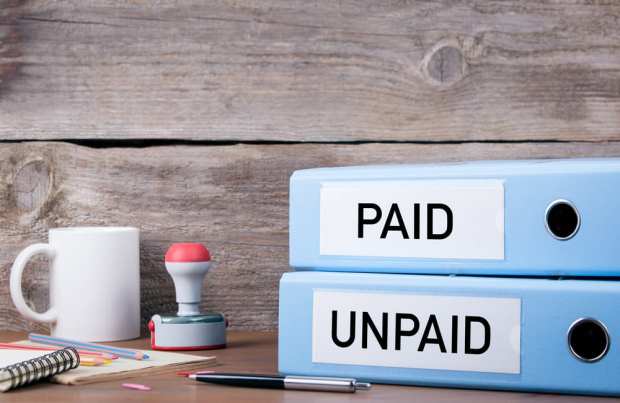How SMBs Can Address Late Payments — Before They Happen

Few small businesses (SMBs) are immune to the risk of delayed and late payments. With payment terms an age-old practice in B2B trade, ensuring trust between a buyer and supplier is essential for small vendors that provide goods and services — in the hope that they will eventually be paid, preferably on time.
Yet, the reality of delayed and late B2B payments is far from ideal: PYMNTS’ own research has found $3.1 trillion stuck in accounts receivable for U.S. businesses alone, with firms willing to extend payment terms and trade credit to keep a business partnership alive.
According to CollBox Co-founder and VP of Business Development Matt Darner, U.S. small businesses write off an estimated $150 billion every year in bad debt from receivables that could not be recovered. That’s only a fraction of the cash-flow burden placed on small firms that are also struggling with lengthier Days Sales Outstanding (DSO) for invoices.
“It’s crazy, the amount of money that’s written off, and that’s not getting paid on time,” Darner told PYMNTS in a recent interview.
One of the largest challenges for SMBs facing late payments is simply the lack of time and bandwidth to chase down outstanding bills, and repeatedly contact customers delaying payment. This presents a significant opportunity for companies like CollBox to step in and provide collections services when invoices go months past due.
However, as Darner explained, there is also a significant lack of education and understanding within the receivables management and collections arena, and SMBs now have an opportunity to address the cash-flow issue long before an invoice goes 90 days or more past its due date.
Preventative Measures
“There’s a lack of education on what to do,” he said. “At what point in the workflow can I prevent an invoice from going past due in the first place?”
Darner emphasized the importance of small businesses establishing expectations for their customers from the beginning of a business relationship. That means a supplier must develop a plan of action with regards to payment terms, and express those payment-term expectations to customers up front.
Yet, setting up payment terms from the get-go isn’t enough to prevent late payments. Darner also pointed to the need for small businesses to treat new customers differently, offering one example of an SMB that may decline trade credit to a new customer until a more established relationship has been fostered. Other measures include setting up clear guidelines on what to do with an unpaid invoice, depending on how late it is: sending an invoice to collections or a service provider like CollBox when it’s only 15 or 30 days past due is not the right move, he advised.
Overall, Darner noted, one of the most effective moves a small business can make is to not only establish these expectations and relay them to customers, but to actually stick to them.
“Small businesses are so busy just trying to make sales that they don’t sit down and say ‘what are my terms?’ and actually stick to those terms,” he said, “because they’re so desperate to grow their business and provide what they think is good customer service — but it’s actually hurting them in the end.”
Finding The Balance
Indeed, the emphasis on customer service has led many small businesses to give in to the pressure of longer payment terms, on grounds that enforcing shorter payment timeframes could jeopardize the B2B relationship. However, Darner noted that small businesses can remain steadfast in their payment terms and collections strategies without risking the loss of a customer, by maintaining a human approach to the process.
For example, a small business not only needs to chase down an unpaid invoice, but communicate with that customer to understand why they are paying late.
“You can maintain that relationship, and build a stronger relationship by helping [the customer] through hard times,” he said. “Those hard times are always going to happen, and I think it’s important, as businesses, to still be human.”
There’s also an important balancing act when it comes to wielding external financing solutions, he noted. For a customer that has hit a slump in the last quarter, the use of a factoring or other invoice financing tool can be paramount to a small business being able to protect its own cash flow. Yet, while factoring can be an important part of the receivables and collections workflow, Darner warned that an over-reliance on factoring can reinforce customers’ bad habits of late payment.
Proactive, Not Reactive
Darner said CollBox positions itself in the “deep end” of the receivables process as a solutions provider for when things go wrong. Increasingly, though, the company is extending itself earlier in the workflow, helping small businesses receive the necessary education to prevent an invoice from ever having to be chased down by a company like CollBox in the first place.
As it does so, Darner pointed to key opportunities in data analytics to not only help businesses collect the money owed to them, but more accurately predict and forecast cash flow, as well as assess the likelihood of an invoice being paid on time based on company size, location, industry and other benchmarking factors.
“I think we’re really getting to an age where data is more available than ever before,” he said, pointing to analytics opportunities with artificial intelligence and machine learning. “We’re still in the infancy of that age, but we’re starting to unlock it, and break down barriers. It’s important to embrace that tech, because what this boils down to is how can we make or save a business money?”
